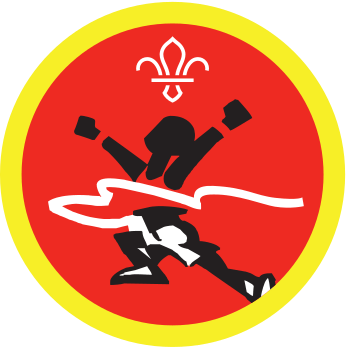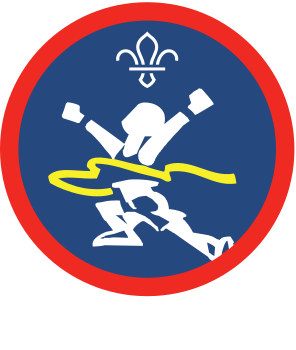Muscle shuffle
You’ll need
- Chairs
- Chalk
- Access to the internet
- Device to play music
Before you begin
- Use the safety checklist to help you plan and risk assess your activity. Additional help to carry out your risk assessment, including examples can be found here. Don’t forget to make sure all young people and adults involved in the activity know how to take part safely.
- Make sure you’ll have enough adult helpers. You may need some parents and carers to help if you’re short on helpers.
- Anyone who’s part of a sports club or working towards their Athletics Plus Badge should be encouraged to come to this session and ready to lead a warm-up for the group. They should also be ready to explain what muscles the warm-up applies to and why it’s important to warm up.
Getting the music ready
- Anyone leading the warm-up should also think about some popular dances and their moves. If they like, they could prepare an appropriate warm-up playlist to play in the session.
- Have a safe spot that's out of bounds and where chairs can be stacked.
- Set up an audio device and speakers somewhere out of bounds. Check that there are no stray wires or other trip hazards.
Run the activity
- Arrange the chairs in an outward-facing circle. Make sure there’s still plenty of room to move about.
- The person or people leading the warm-up should instruct everyone to copy them. The warm-up leaders should introduce a new dance or stretch each time the song changes. Everyone should spread out around the circle and shake out to loosen up.
- The person leading the activity should start the music. Everyone should copy the dance or stretch performed by the warm-up leaders. Some of these could be slow, allowing everyone to focus on the muscles they’re using, and some could be quick.
- At certain points, the person leading the activity should stop the music and everyone should try to sit in a chair.
- During each round, remove a chair from the game and stack it out of bounds.
- Anyone who’s unable to sit in a chair when the music stops should come up with the next dance or stretch. They may do this with the help of those leading the warm-up.
- Run a few rounds with all the chairs so that everyone can familiarise with a few different moves.
- Everyone should keep moving throughout, whenever the music is playing. Keep going until there’s only one person remaining. That person is the winner.
Reflection
This exercise made warming up into a game. Warming up is really important for all sports, including all athletic, gymnastic and even static disciplines (for example taking a shot in snooker). What does warming up do to the body’s muscles to help them perform better in sport? Everyone should check on their own body after doing the warm-up to see for themselves. They should feel warm and have an increased heart-rate. How does this help?
Safety
All activities must be safely managed. You must complete a thorough risk assessment and take appropriate steps to reduce risk. Use the safety checklist to help you plan and risk assess your activity. Always get approval for the activity, and have suitable supervision and an InTouch process.
- Active games
The game area should be free of hazards. Explain the rules of the game clearly and have a clear way to communicate that the game must stop when needed. Take a look at our guidance on running active games safely.
Tackle more muscle groups for a comprehensive warm up. Think carefully about which dance moves can target as many muscles as possible.
If using chairs isn’t practical, mark out spaces on the floor with chalk or tape.
Make sure dance moves can be performed by everybody without straining, or have alternatives for those unable to copy certain movements.
All Scout activities should be inclusive and accessible.
If you’ve used this activity to warm up for a sport or other activity, why not use it to cool down afterwards too? Run musical chairs again with stretches and slow motion dances to ease any muscle stiffness.
This warm up gives group members the opportunity to lead and develop their communication skills as they speak and demonstrate in front of the group.


